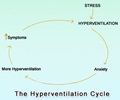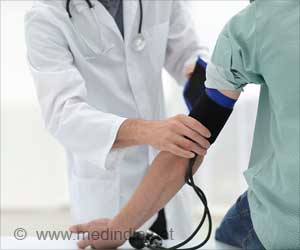Finding of a Mayo Clinic study says significant fluctuations in the first hour blood pressure after a stroke drastically increases the chances of death.
Finding of a Mayo Clinic study says ‘significant fluctuations in the first hour blood pressure after a stroke drastically increases the chances of death’.
According to this study patient mortality increases with a varying diastolic blood pressure, which again is rooted to an impaired autoregulation of blood pressure.The researchers studied 71 emergency room patients with ischemic stroke symptoms of less than 24 hours. Blood pressures were checked every five minutes during the patients' stay in the emergency department. Results showed that patients with widely fluctuating blood pressure during the first three hours in the emergency room were much less likely to survive more than 90 days after the stroke.
‘These data suggest that additional studies are needed to clarify the optimal management of blood pressure in the setting of acute ischemic stroke,’ says Latha Stead, M.D., Mayo Clinic emergency medicine specialist and lead author of the study. ‘Until those studies are performed, health care providers should be careful not to overtreat high blood pressure acutely after ischemic stroke and need to consider urgently supporting blood pressure in those patients in whom the blood pressure is low.’
In an earlier study, also published in Neurology, the research team had shown that a low initial blood pressure in stroke patients upon arrival in the emergency department was an early indicator of poorer survival. This new research supports that finding, but clarifies that of all the aspects of blood pressure studied, the variability -- especially in diastolic blood pressure -- during the emergency room stay was the most predictive of a poor outcome. The researchers believe the increased mortality of patients in this study was due to impaired autoregulation of blood pressure and that those who had a more constant blood pressure had better flow of blood to the ischemic penumbra -- the part of the brain that lacked in blood supply, but had enough blood flow that it might still be saved with aggressive treatment. This differs from the infarcted tissue, which is damaged beyond repair.
Since death due to stroke increases among older patients and those who have more severe strokes, the data collected was adjusted for both factors. Just over half the 71 patients were male. Ages ranged from 26 to 98, with the mean at 75 years. One-fourth of the patients had suffered a prior stroke. Three-fourths had a history of hypertension. All the patients arrived at the emergency department within 24 hours of stroke symptoms appearing, 82 percent of them within two hours of the onset of symptoms. Of the 71 patients studied, 20 (28 percent) died within 90 days. Cause of death in most cases was the acute stroke.
The researchers note that this relatively small initial study should be replicated with a larger sample as a next step. They also indicate that the group of patients studied represented a slightly higher percentage of more severe strokes.
Advertisement











